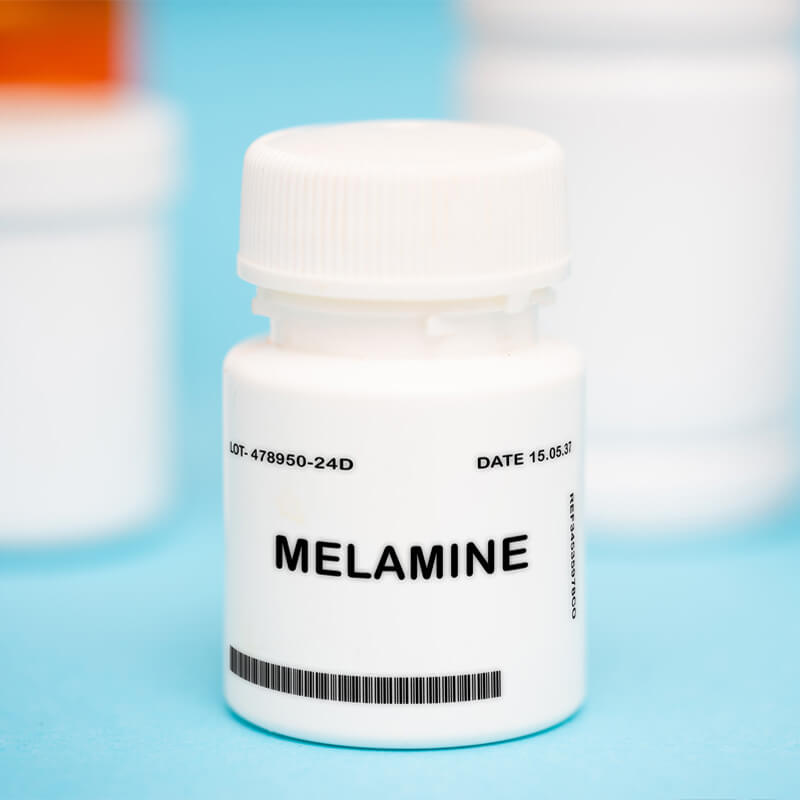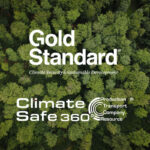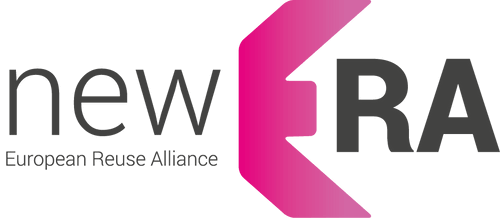Containers without melamine are a safe and eco-friendly alternative to conventional plastic containers that may contain potentially harmful melamine. The following outlines the benefits of food packaging that is melamine-free.
What is Melamine?
Melamine is a solid nitrogen compound (C₃H₆N₆) used to produce melamine resin. Since the 1950s, it has been commonly used in the production of plastics, laminates, adhesives, dishware, and kitchen utensils. Due to its strength, durability, and heat resistance, melamine is valued in many everyday products, including sturdy camping dishware and kitchen utensils. However, melamine can pose health risks when it comes into contact with food and leaches into it. Thus, alternative packaging free from melamine is becoming increasingly important.
What Does Melamine-Free Mean?
»Melamine-free« means that a product contains no traces of melamine. Products can be labeled as »melamine-free« if they meet stringent safety standards and have been tested to show they contain no detectable amounts of melamine. This labeling provides assurance of the product’s safety in contact with food.
Health Risks of Melamine
Melamine poses potential health hazards. When melamine-containing products come into contact with hot or acidic foods, melamine can migrate into the food. The harmful effects include:
Kidney damage: Melamine can lead to kidney damage if ingested in larger amounts.
Risk of poisoning: Melamine is not intended for human consumption and can be toxic if it enters the body.
Cancer: In high doses, melamine can be carcinogenic.
Advantages of Melamine-Free Containers
In contrast, melamine-free food containers offer many benefits, making them a better choice for the hospitality and food service sectors:
Health and safety: Melamine-free containers are often made from bio-based plastics that are food-safe and do not release harmful chemicals, even at high temperatures.
Sustainability: The production of melamine-free containers involves a high proportion of renewable raw materials, thereby conserving finite resources.
Functionality: Melamine-free containers can be cleaned and reused many times, are often microwave and dishwasher safe, shatterproof, and frequently recyclable.

What Products Are Melamine-Free?
Lunch boxes and snack boxes: Lunch boxes and snack boxes for children are often made from materials that are melamine-free to ensure that no harmful chemicals leach into the food.
Baby dishware and pacifiers: Products for babies and toddlers are frequently made melamine-free to protect them.
Picnic dishware: Dishware and containers for outdoor activities are often made without melamine to ensure the food contained is safe to consume.
Melamine-Free Reusable Containers
We offer customizable reusable dishware made from renewable raw materials that are melamine-free and BPA-free. The range includes soup cups, tableware, meal plates, bowls, meal boxes, and cutlery.
Safety: The composite material made from sustainable bio-compound is manufactured without melamine and is food-safe.
Sustainability: The reusable packaging is bio-based and consists of 98 percent renewable raw materials, some of which come from sustainable forestry.
Reusability: The reusable containers are sturdy, dishwasher safe, shatterproof, and can be cleaned and reused many times.
Conclusion
Products and packaging for food and beverages that are melamine-free offer health safety, build consumer trust, and meet regulatory standards. Melamine-free tableware and food containers are excellent alternatives to conventional plastic packaging, making them suitable for use in hospitality, events, canteens and large kitchens, supermarkets, and generally anywhere food and beverages are served.







